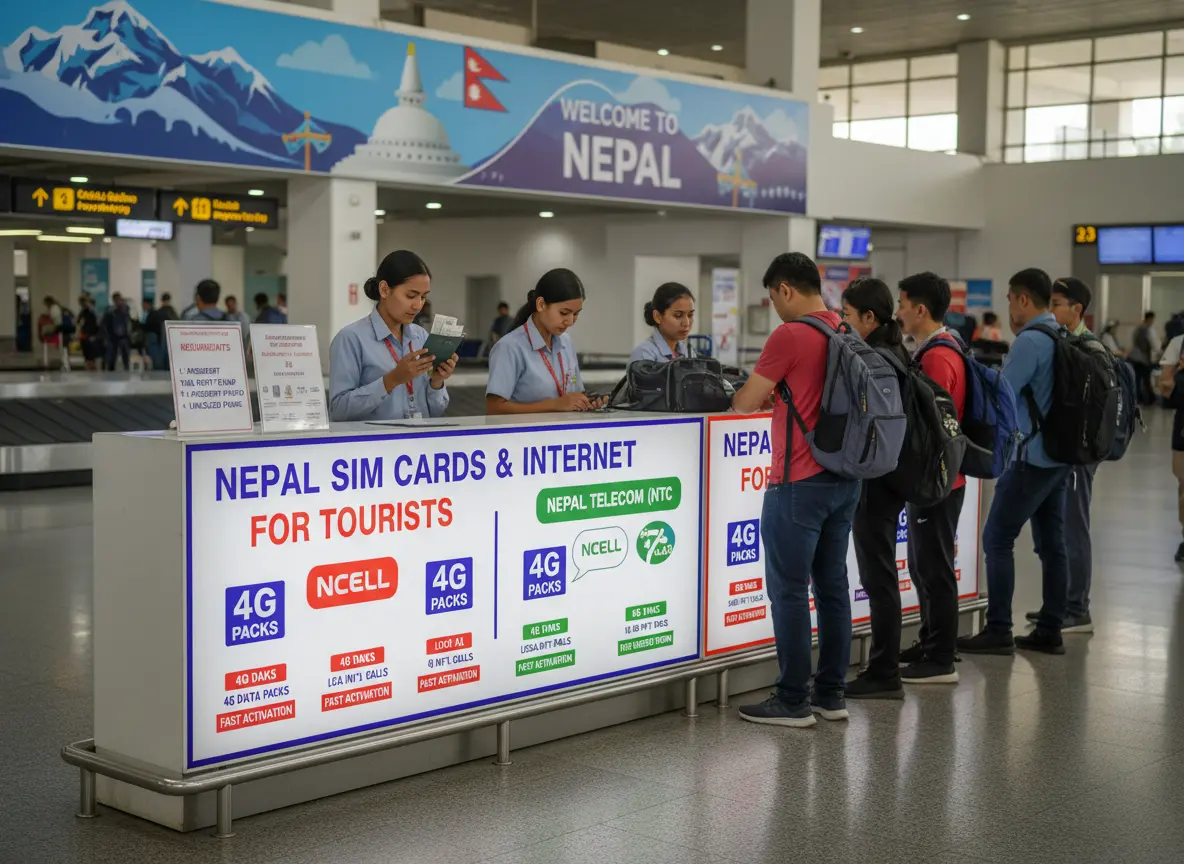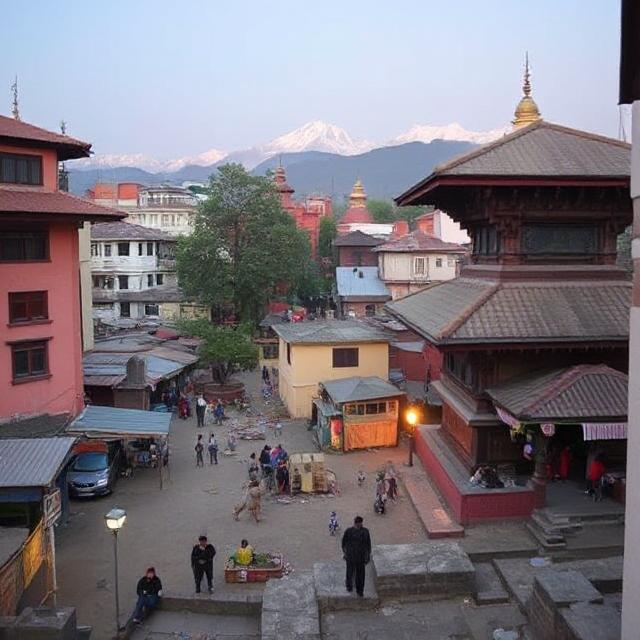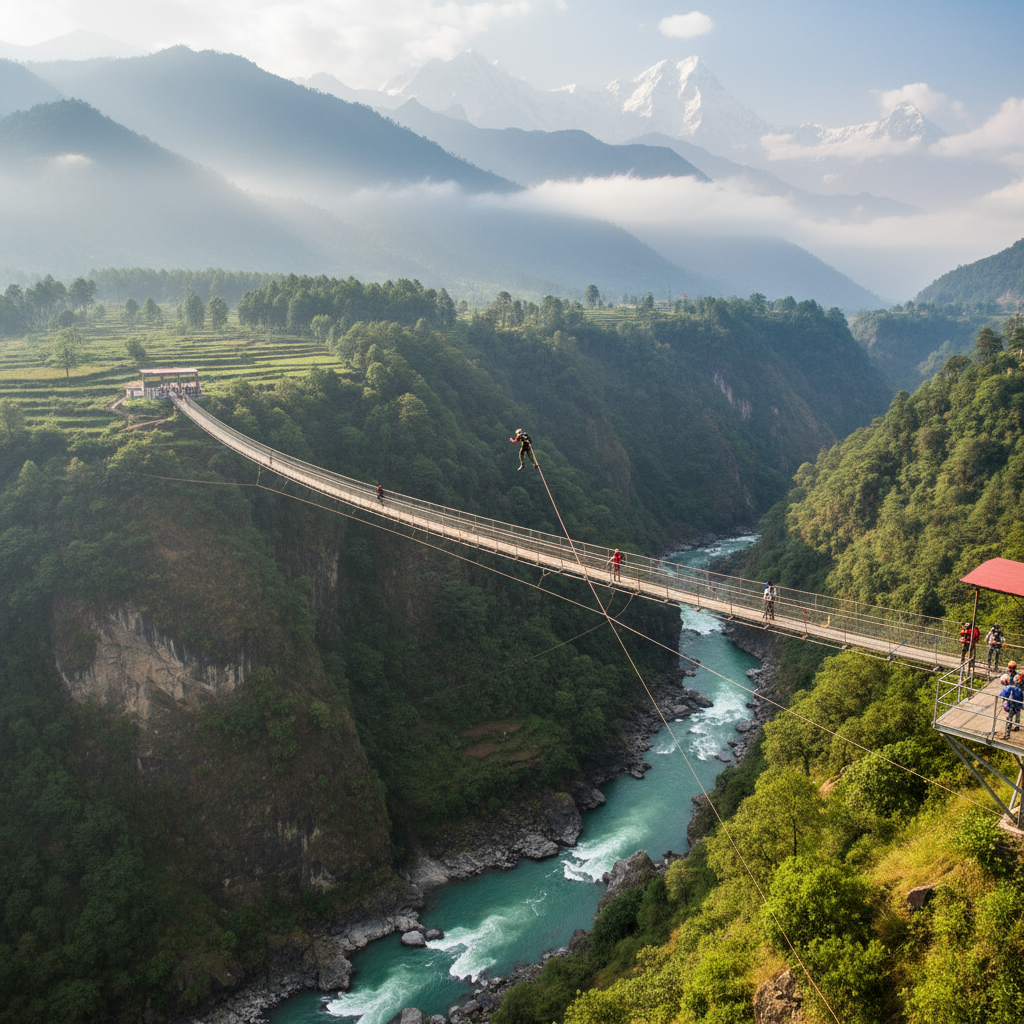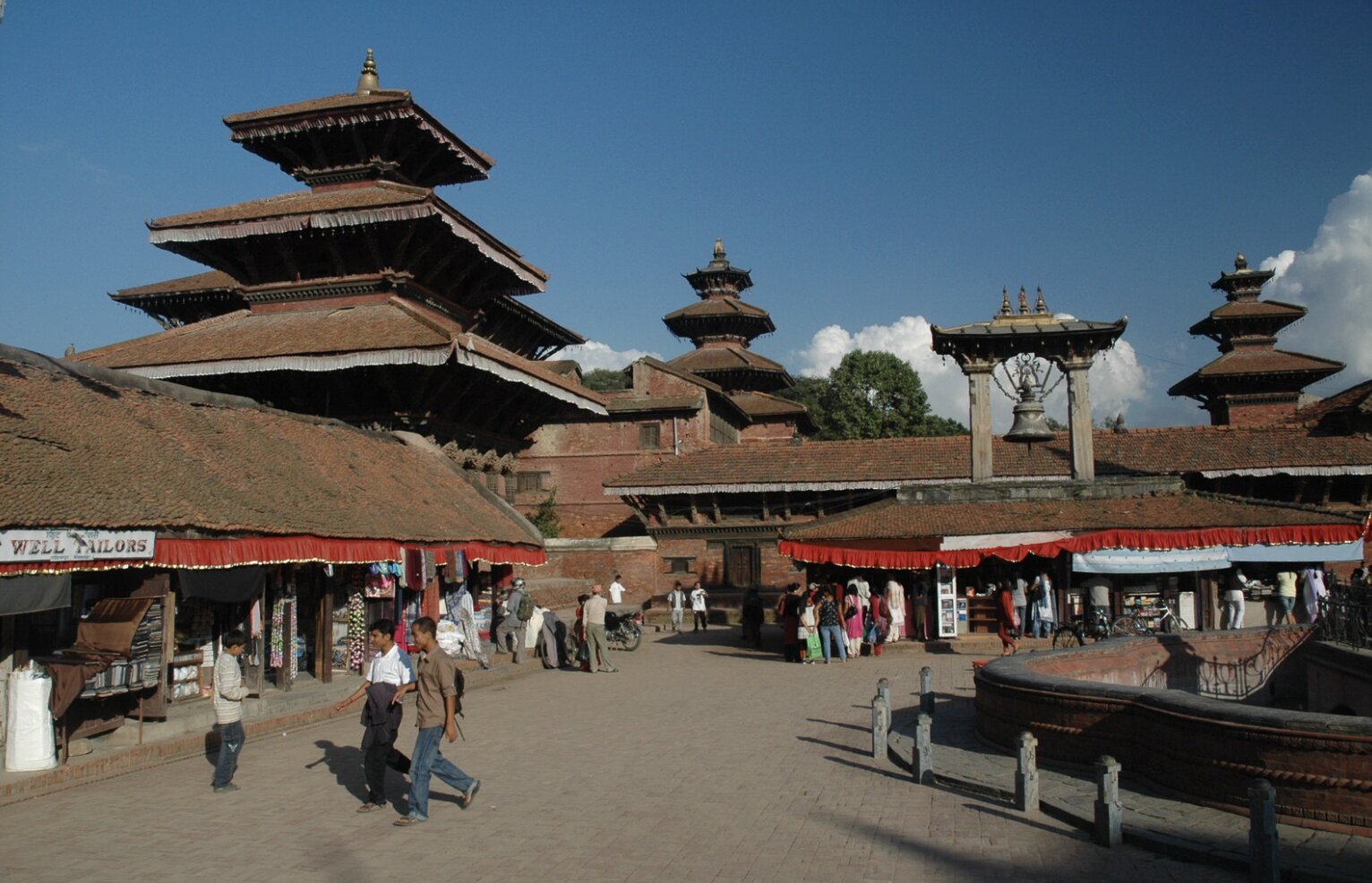Nepal SIM Cards & Internet: Tourist Options, Coverage Maps & Where to Buy

Mahenbalal
Travel Writer & Local Expert

📋 What's in This Guide
💡 Click on any section to jump directly to that part of the article
As you arrive at Tribhuvan International Airport following a long flight, your first concern as a traveler is to get connected to the local network. From the need to send a text message to your hotel for pickup arrangement, to navigate through Kathmandu's maze of narrow streets, or just talk to loved ones back home to inform them of your safe arrival, having a working SIM card proves to be indispensable. Fortunately, purchasing a tourist SIM card in Nepal is easy and remarkably inexpensive compared to the exorbitant cost of international roaming. The catch, however, is choosing between companies and having any idea what you're paying for. Nepal has two major mobile network operators that tourists encounter, both of which have extremely different pros and cons. Nepal Telecom, or NTC for short, is the government-owned telecom giant that began operations from the beginning of mobile phone service in the country. In contrast, its privately owned competitor Ncell has built a reputation for providing faster data speeds, particularly in urban areas. Each of the two carriers has developed loyal clienteles, and which to choose among them typically boils down less to any measurable edge one enjoys over the other and more to your travel plans.
Urban vs. Rural Coverage: The Great Divide
If your Nepali travels are primarily sightseeing around Kathmandu, Pokhara, and other major cities with the occasional day trip here and there to Chitwan National Park or Lumbini, Ncell is typically the better choice. Their 4G LTE city network is first-rate, the speeds being equivalent to most of the world's developed countries. Streaming movies, making video calls, and posting photos on social networking sites is smooth on Ncell's network at the tourist hotspots. The company has invested a lot of money on infrastructure along the shores of Lake Pokhara, within and around Kathmandu's hectic Thamel area, and along highways connecting popular tourist spots to ensure seamless coverage on bus journeys between cities. But the coverage equation flips entirely as soon as you venture out into trekking regions or rural towns. This is where Nepal Telecom's extensive coverage network comes to the rescue, since the company has telephone towers in locations where it would be economically unsound for private companies to operate business, simply because government edicts require communications infrastructure throughout the country.
Trekking Region Coverage: Where the Networks Diverge
The variations between providers are starkly brought to life on Nepal's most popular trekking loops. On the traditional Everest Base Camp trek, Ncell has decent signal all the way through to Namche Bazaar and possibly as far as Tengboche, but past these points, the coverage significantly drops off. By the time trekkers arrive at Pheriche or Dingboche, Ncell coverage is de facto zero. Meanwhile, NTC has coverage right out to Gorak Shep and even at Everest Base Camp itself, though speeds are extremely slow and connection remains finicky, much at the mercy of the weather. It's not uncommon to have trekkers sitting around one corner of a tea house where there is most NTC signal, frantically trying to get quick messages out back home before the connection fails. Both operators work fine in the Annapurna region until Machapuchare Base Camp and Annapurna Base Camp, with NTC being marginally more consistent. The largest difference comes in more remote locations like Upper Mustang, Manaslu Circuit, or distant western trekking routes where NTC will typically be the only choice. For serious trekking off the main trails, an NTC SIM card is not only a good idea—it's practically a communication and safety imperative.
Airport Purchase Process and Documentation Requirements
The simplest place to obtain a SIM card is when you arrive at Kathmandu Airport, where NTC and Ncell have stands at the exit doors after collecting your luggage. At business hours, the process is remarkably efficient. You will need to produce your passport, photocopy of the visa page or entry stamp, and one passport photo. You'll probably already have passport photos from when you got your last visa, but if not, there are photo booths inside the airport where they can take care of this for a fee. The NTC counter offers a variety of various tourist packages depending on how long you will stay. Their top-selling package provides 1GB a day for seven days along with 60 minutes of call time for 500 Nepali rupees (around 3.50).
Ncell's Pricing Model and Package Choices
Ncell's airport plans differ from NTC's plans. The SIM card itself costs 110 rupees (a bit over $1), and then you purchase data packages on top of the initial cost. Their flagship tour package gives 10GB for a week and 40 minutes of calltime for 500 rupees. This is a much larger total amount of data than NTC's 1GB per day offering, which may appeal to customers who like using data in bursts of activity rather than spread evenly over the duration of each day. But once you've consumed those 10 gigabytes, you'll need to top up again, whereas with NTC daily your quota refills daily. This difference in strategy is reflective of the companies' awareness of various usage patterns—NTC serving regular day-wise users and Ncell focusing on those who may have more intense usage days and lighter days.
Critical Airport Limitations and Alternative Options
An important piece of information that surprises most tourists is that the SIM card counters at the airport are not necessarily open 24 hours a day. The Ncell counter typically closes at 5:30 PM, and NTC also has similar hours. If you get in early in the morning or late in the evening flights, you will need to wait for the counters to re-open or go to Kathmandu to purchase a SIM card. This limitation is also one of the rare instances when pre-booking your airport transfer or accommodation is necessary, since ride-sharing and navigation apps cannot be used without internet access. Travelers who arrive during off-peak hours will see this imposition significantly influence your on-the-fly travel plans, particularly when driving to accommodations in unfamiliar areas of Kathmandu.
City Purchase Options and the Thamel Experience
Buying a SIM card inside proper Kathmandu, in the tourist area of Thamel, is more convenient and sometimes cheaper, but with the price of additional time and effort. There are dozens of mobile phone stores along Thamel's streets where you can purchase SIM cards from either company. The upside of this is that shop owners are accustomed to having dealings with foreign travelers and can typically identify in great detail the various recharge locations. You will still need to have the same documentation—passport, visa copy, and passport photo—but stores in Thamel sometimes take photocopies and take photos for you if you don't happen to have these arranged in advance. Registration is a matter of filling in a form with your details, confirmable by the shop sending it to the telecommunication provider. Activation is usually completed within hours but sometimes continues until the next day, so a little advance planning if you need to connect immediately.
Top-up Processes and Recharge Methods
Following the depletion of your initial package, topping up data is convenient throughout Nepal. Small Ncell or NTC-branded shops are ubiquitous in holiday resort towns and towns, and shopkeepers are skilled at selling foreign visitors top-up cards. While topping up from mobile apps is available, this often requires access to a Nepalese bank account or navigation of relatively unintuitive user interfaces not necessarily designed for foreign visitors. The most straightforward option remains purchasing physical recharge vouchers and calling the recharge number or SMS codes to refill your account. Data bundle recharges are extremely cheap with both operators offering bundles around the lowest 25 rupees for small data amounts good for a couple of days up to large bundles. A normal recharge would be 200 rupees for perhaps 5GB that lasts a week, but packages vary seasonally and regionally. It's the configuration of the various packages to understand—daily packages provide you with a fixed amount that replenishes automatically every day, whereas weekly or monthly packages provide you with a total amount that you can spend at your choice within the period.
Nepal internet speeds are typically good enough for average tourist use but won't blow you away with what they can do. In Kathmandu and Pokhara on good Ncell 4G days, you can expect to get download speeds of 15-25 megabits per second, which is perfect for video calling, streaming audio and social media browsing. NTC's urban 4G speeds are typically one generation behind but nonetheless quite fine for normal use. On trails, even where you can receive signal, speeds are extremely slow. Plain reading of email and SMSing should work just fine, but don't expect to be downloading high-res photos quickly or watching video from a tea house at four thousand meters' elevation. The infrastructure just wasn't designed to carry high-bandwidth applications in these remote locations, and managing expectations is central to avoiding frustration.
Dual-SIM Strategy: The Advanced Approach
The dual-SIM capability of many modern smartphones offers an intriguing workaround that some frequent visitors to Nepal employ. They purchase both NTC and Ncell SIM cards and keep both activated in a dual-SIM phone. This approach allows them to use Ncell's faster speeds in the cities but then fall back automatically to NTC's broader coverage in rural areas without needing to manually switch SIM cards. While this approach is more costly initially and requires maintaining two separate accounts, it provides access to both worlds' best for someone with several weeks in Nepal and frequent travel between cities and rural areas. The convenience of not having to actually swap out SIM cards and still achieve maximum connectivity regardless of where one is traveling makes this approach increasingly popular with long-term travelers and digital nomads as well.
Digital Nomad Statistics and Remote Work Truths
For remote employees or digital nomads heading abroad to work remotely in Nepal, it is important to understand the limited dependability of internet connectivity. While WiFi in Kathmandu and Pokhara cafes is aggressively advertised, the consistency is patchy, with frequent disruptions and unreliable throughput. The availability of a persistent mobile data connection to act as a backup becomes essential for important video calls or deadline work. In these situations, Ncell tends to perform better due to its faster city speeds, but having NTC as a fallback source provides badly needed redundancy. Power outages, though less frequent than in the past, remain a standard feature, and access to mobile data independent of the power supply of a cafe can be the tipping point during the case of critical work obligations. The psychological comfort of knowing you have the option of falling back on alternative connectivity solutions can significantly reduce work-related anxiety while roaming in Nepal.
Decision-Making Framework: Choosing Your Provider
The bottom line for most visitors is reduced to a simple decision tree based on travel plans. If you're visiting primarily Kathmandu, Pokhara, and other prime tourist destinations with little serious trekking, Ncell delivers superior performance and good value for money. The high speeds and more attractive data packages make it the clear choice for city-focused itineraries. If there's any serious trekking on your schedule, especially to Everest Base Camp or in remote regions like Upper Mustang or Manaslu, NTC is the wiser choice despite potentially slower speeds in cities. The extended coverage in remote areas can be crucial for safety and communication. If you are in Nepal for a few weeks with a mixed itinerary that includes both city journeys and trekking, it will be worth buying both SIM cards if your phone is dual-SIM supported. At these reasonable prices—with tourism packages only a few dollars—reliable connectivity for your entire Nepal visit is well worth the added small expense, so you can relax and enjoy your trip without having to worry about staying in touch with loved ones back home or about learning your way around.



